The OnePlus Open raises the bar for foldable phones
Content is created by CNN Underscored’s team of editors who work independently from the CNN newsroom. When you buy through links on our site, CNN and its syndication partners may earn a commission. Learn more
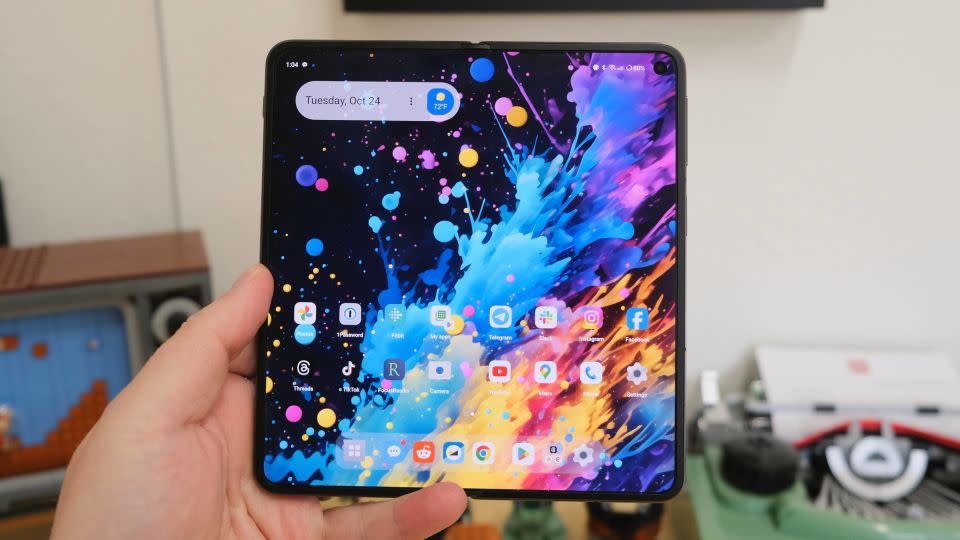
Smartphones are fun again, aren’t they? Instead of rectangular slabs of glass that look way too similar, foldable phones from the likes of Samsung and Google have changed the way some of us use them. Even if you’ve never used a foldable phone, that’s sure to change in the near future as more foldables come to market, giving consumers more options.
The newest foldable option is the $1,700 OnePlus Open, which is a first for the company. The Open is priced $100 lower than the Galaxy Z Fold 5 and Google Pixel Fold, and OnePlus has also announced a permanent trade-in promotion that will take at least $200 off the price of the phone with the trade-in of any smartphone, regardless of its condition. I think it’s safe to say we all have a broken phone or two sitting in a drawer somewhere, which more or less makes the starting price of the Open $1,500.
After testing the Open for the last two weeks, I can confirm that there’s a lot to like. Is it enough to make it the best foldable you can buy right now? That depends.
OnePlus Open
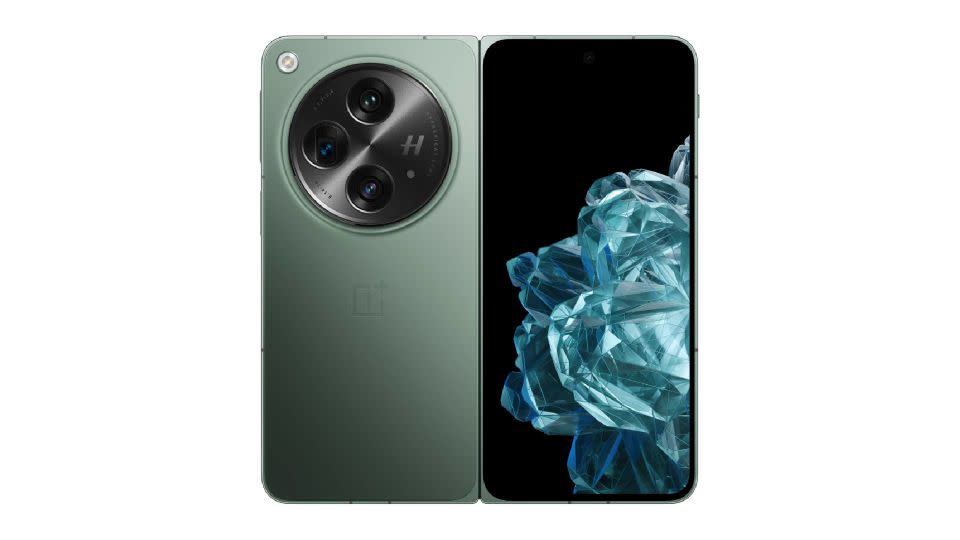
With excellent battery life, the best multitasking experience available and a great camera, the OnePlus Open is a great pick for folks who want a big-screen foldable phone that's cheaper than what Samsung and Google offer.
What we liked about it
Build quality unlike any other foldable
The first time I opened and closed the OnePlus Open, I’m fairly confident I let out an audible “oohhhhhh” because of just how smooth it felt while opening and closing the phone. In the last year alone, I’ve used at least six different foldable phones, each one with its own unique design and hinge. And out of all of those, including the last two generations of Samsung’s Z Fold and Z Flip line, Google’s Pixel Fold and Motorola’s Razr+, the OnePlus Open has the smoothest, most reassuring hinge.
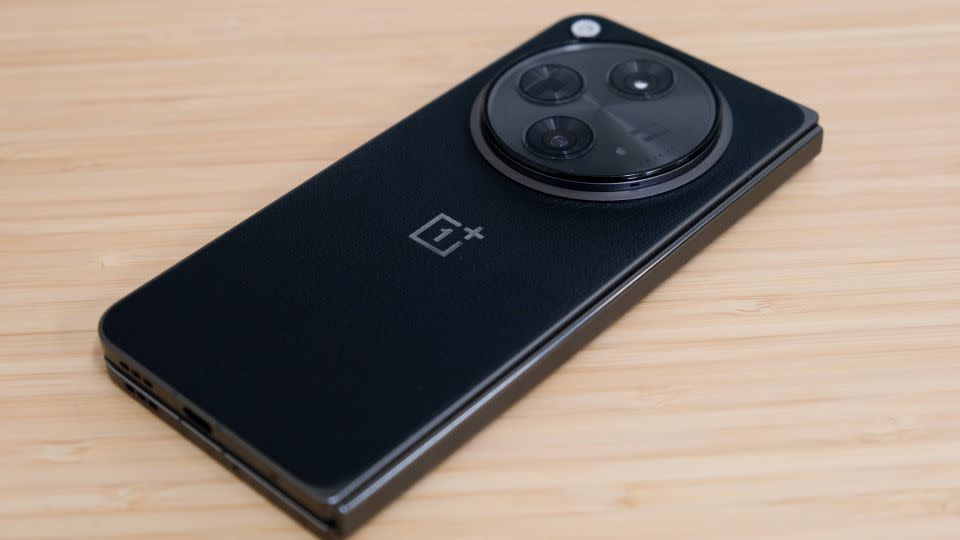
The 6.31-inch cover display is similar to what you’d see on a standard smartphone. It reminds me of the same general display size as Google’s Pixel 8, complete with the hole-punch front-facing camera. It’s not too wide, like the approach Google took with the Pixel Fold, or too skinny, which is a common complaint about the Z Fold 5’s cutter display. Both approaches have some sort of compromise, but that’s not the case with the Open.
You can and should use the front display as if it’s a regular smartphone. When you unfold the Open, you’re greeted with a 7.82-inch internal display. There’s a hole-punch camera tucked into the top right corner of the display, out of the way — something I often forgot was even there when using the phone.
There’s a slight crease in the middle of the internal display, but it’s not as pronounced as on the Pixel Fold or Z Fold 5. And, for those curious, the Open does completely open flat. (Something I was told my Pixel Fold would do after a breaking-in period, but several months later, I still have to force my Pixel Fold to open flat.)
On the right edge of the Open’s housing is a fingerprint sensor that pulls double duty as a sleep/wake button, with the volume controls above that. I’ve been using the Open for a couple of weeks now, and I still find myself accidentally pressing the sleep/wake button instead of the volume rocker when I want to change the volume of a video or music. The volume button is so high on the side of the phone that I just can’t get used to making the extra reach.
The material that covers the back of the phone depends on which color you buy. I have the Voyager Black model that has a vegan leather skin applied to it. The Emerald Dusk model has a matte-frosted glass back.
The Open isn’t quite the thinnest foldable available — the Pixel Fold still holds that title — but it’s close. When opened, the Open measures 6.04 by 5.63 by 0.23 inches. When closed, it measures 6.04 by 2.89 by 0.46 inches. In total, it weighs 8.43 ounces or 239 grams, which is much lighter than either the Z Fold 5 or the Pixel Fold.
I’ll get into this more below, but the size of the rear camera housing makes an otherwise balanced device feel awkward to hold when open. That’s my lone complaint about the design, and while it’s a big one, it’s one that has its own set of trade-offs.
The design and build quality of the OnePlus Open took me by surprise, as I’m sure they will anyone else who gets their hands on it.
Performance and multitasking tricks
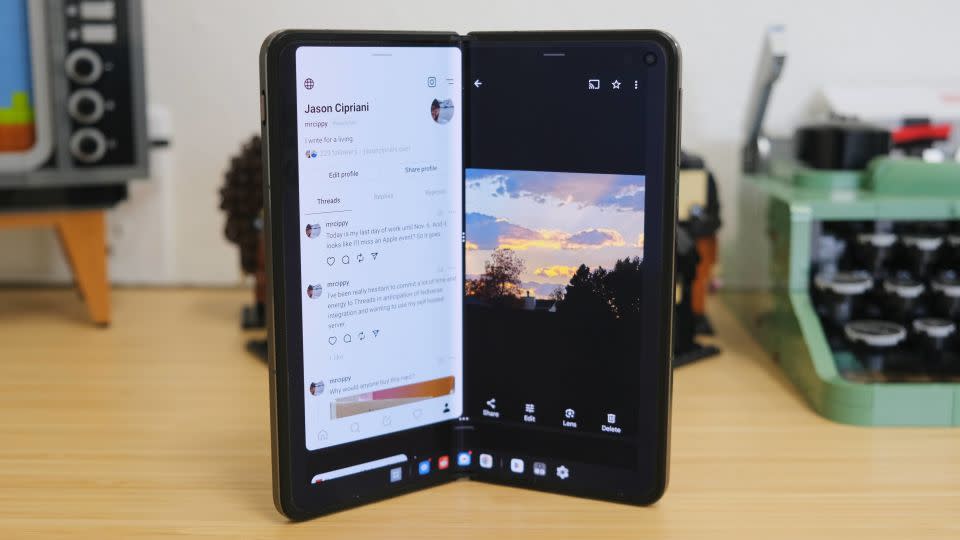
Powering the OnePlus Open are Qualcomm’s Snapdragon 8 Gen 2 processor, 16GB of memory and 512GB of storage. That’s the only configuration you can buy, and it’s more than enough, especially considering this phone drops down to $1,500 after discounts.
The specifications of the Open are similar to the Z Fold 5, with OnePlus’ phone packing 4GB of more memory and a nearly identical processor. The Z Fold 5 uses an overclocked version of the Snapdragon 8 Gen 2 that carries a “for Galaxy” tag in the name, indicating it was tuned to Samsung’s requirements, giving it a slight performance boost.
As we typically do at CNN Underscored, I ran the benchmarking app Geekbench 6 on the OnePlus Open to measure its performance on routine computing tasks and then compared its scores to the other leading foldable phones available right now. The results aren’t all that surprising, with the OnePlus Open holding its own against the Z Fold 5 and outperforming the Pixel Fold.
Taking a closer look at the above results, you can see that the Pixel Fold and Open have almost the same single-core performance. Single-core scores are indicative of performance during basic tasks, like sending a message or loading a web page. However, the multi-core performance scores are what you use to objectively measure how well a device will handle more resource-intensive tasks, such as gaming or multitasking. And as you can see in the above chart, the Open and Z Fold 5 outpace the Pixel Fold by a wide margin.
I always say that benchmarks are only part of the story, with the rest of it consisting of anecdotes from personal experience. Where the Open’s performance really shines is with its innovative multitasking software features, which it calls Open Canvas, where you can use three apps at the same time without making you feel like you have too much information on the screen at any given time.
The typical multitasking experience on a foldable, be it the Pixel Fold or Z Fold 5, has been to use two apps, side by side, on the screen at the same time. And while the Open supports doing just that, you’re not stuck to only that arrangement.
When you have two apps open at the same time, you can drag the handle that’s in the middle of the apps to effectively maximize one app, while hiding the other app on either side of the screen. When you want to switch to the second app, you simply tap inside the small sliver of a window that’s on the edge of the screen. Doing so gives you a nearly full-screen experience of either open app.
But OnePlus didn’t stop with just improving on the two-app approach and added a third app to the equation, and it’s equal parts intuitive and powerful. When you have two apps open, you can drag another app to the screen from the taskbar or app drawer. When doing so, you can either replace an open app, or you move the icon to a small white box that shows up near the bottom middle of the screen and let it go inside there, you’ll see the app open in what’s more or less a full-screen experience. Yet, you can still see small slivers of the other two pops near the top of the screen. Tapping on either one will partially minimize the full-screen app while the other two apps are now presented to you.
Just last night, while watching game seven of the American League Championship Series, I spent most of the game bouncing between Slack, Threads and Chrome, all open and available on the screen without having to touch any app icons or use gestures.
If you’re someone who needs a device that lends itself to multitasking and getting a lot done on one screen, the Open’s multitasking prowess is unmatched by any foldable right now.
Battery life is good — really good
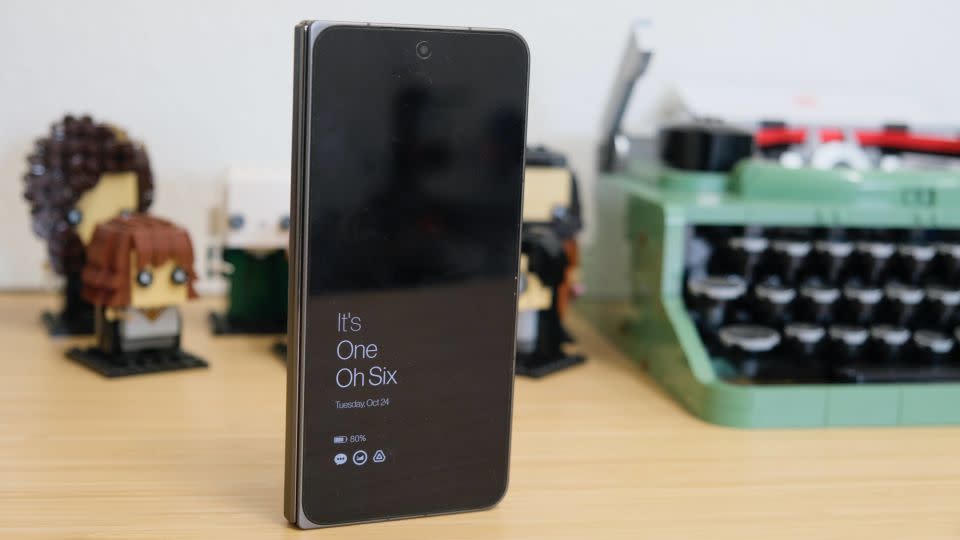
You won’t have to worry about battery life on the Open. I’ve been charging the phone once every 36 hours or so, and that’s with heavy use each night while I put the multitasking features on the internal display to the test.
To measure the Open’s battery life against previous phones we’ve tested, I played a 4K video file on loop with the internal display brightness set to 50%. At the end of the test, the Open lasted 17 hours and 26 minutes. In the same test, Samsung’s Galaxy Z Fold 5 lasted 14 hours and 47 minutes while Google’s Pixel Fold lasted 10 hours and 56 minutes. That’s a lot more endurance than the competition.
And when you are running low on power, you can use the included wall adapter and cable to take advantage of OnePlus’ Supervooc 67W charging. I was able to go from a completely empty battery and the phone powered off to a charge of 81% in 30 minutes, with the phone completely charged in under an hour.
The worst part about the charging setup for the Open is that you have to carry a dedicated adapter and cable to take advantage of it. It’s a minor inconvenience, but an inconvenience nonetheless, especially if you’re like me and try to consolidate your wall adapters and cables when traveling.
A consistent camera experience
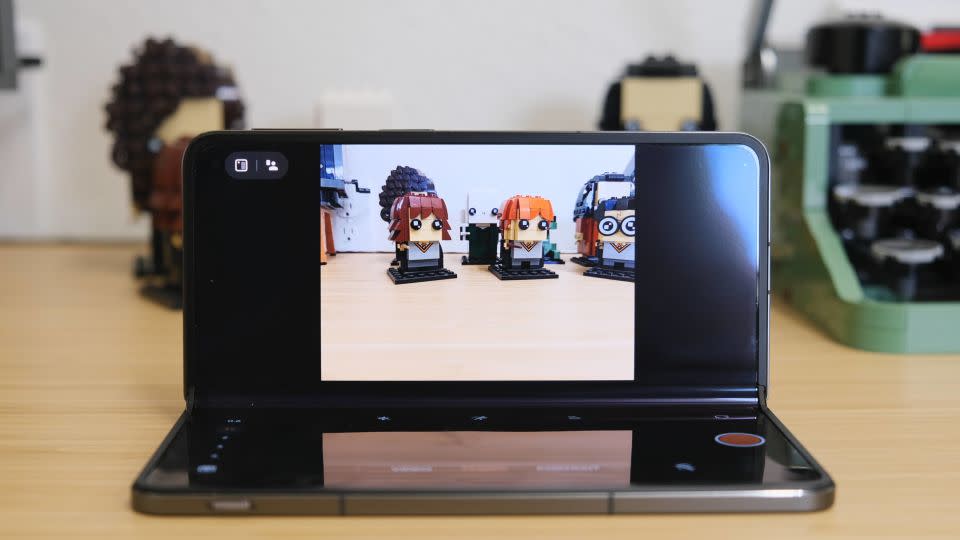
The Open has a versatile three-camera setup, like most modern smartphones, but it’s also one that pushes the boundary of what we normally see from a foldable phone’s camera, especially when it comes to quality.
Up until now, I’d considered the Pixel Fold to be foldable with the best camera experience, and while I’m not entirely convinced the OnePlus Open has it beat overall, there’s a lot to like about what OnePlus offers here.
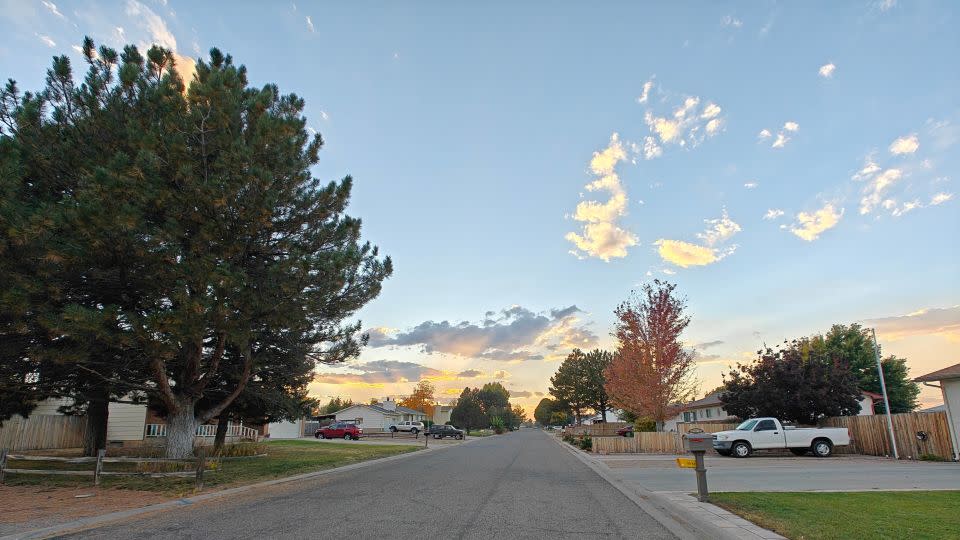
Pictures from the main camera have produced clear, crisp images with what I’d consider proper saturation and a true-to-life appeal to them, similar to what you’d see a Pixel or iPhone capture.
The telephoto lens has 3x optical zoom, but it also features a 6x zoom that uses software tricks to crop the sensor (similar to what Apple does with the iPhone 15 Pro and Pro Max), while digitally zooming in all the way up to 120x. That’s far too much zoom for what most people will want or need on a regular basis, but it sure is fun to use.

The last time I reviewed a OnePlus phone, the ultrawide camera had some issues with clarity and color on either edge of the photo. However, everything I’ve captured at 0.6x has lacked any of those imperfections and looked like a standard photo.

Photos taken in low light have generally looked good, as well. The OnePlus Open captures plenty of light without overexposing the picture or making it look fake.
What stood out to me the most about the Open’s camera experience is that it doesn’t vary or produce wildly inconsistent results. When you open the camera app, you have the confidence that you’re going to take a great photo, and there’s really not much more you can ask for.
What we didn’t like about it
The camera bump
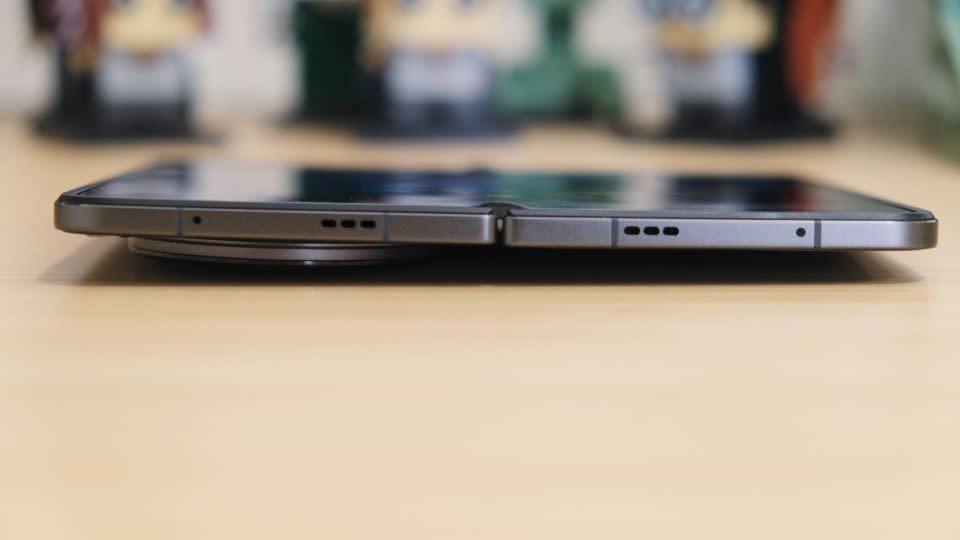
The camera bump on the back of the OnePlus Open, despite housing fantastic cameras, is the worst part of the Open’s design and overall experience. Because of the bump, you can’t lay the phone flat on a surface, regardless of whether the phone is open or closed.
Additionally, it makes one side of the phone heavier than the other when the Open is unfolded, which makes it awkward to figure out how to hold it.
Don’t get me wrong, the camera bump looks fancy and has garnered several comments from family members when they noticed it. But I’d much rather have a smaller camera bump that makes the phone easier to manage, be it on a flat surface or in the hand.
Taskbar and app grid limitations
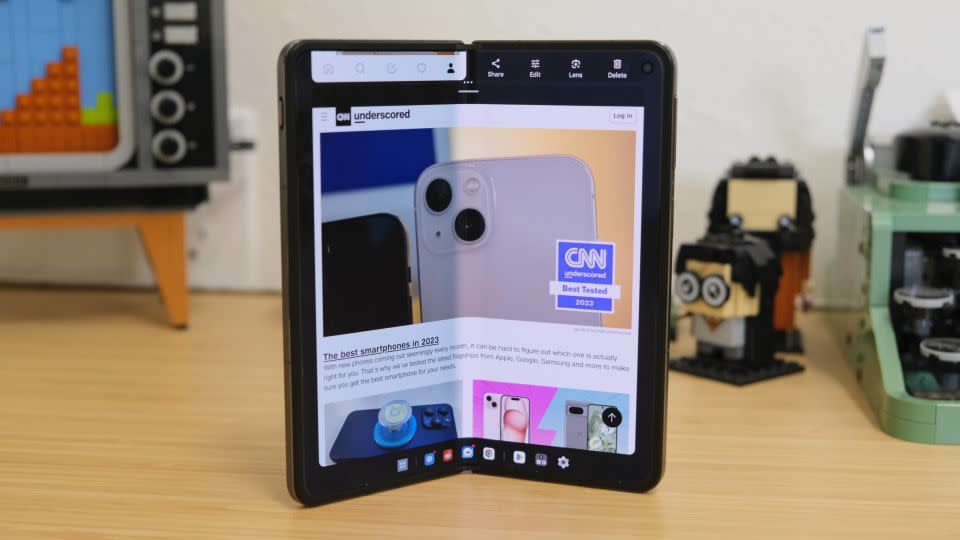
While I’m absolutely in love with the multitasking experience on the OnePlus Open, the inability to further customize the app dock and taskbar on the outer and inner displays, respectively, is puzzling.
More specifically, you can’t add more than four app icons to the taskbar or dock on the Open. This also means you can’t have more than four apps across the front display, or either side of the internal display. You’re locked into a single app grid, which flies in the face of Android being completely customizable.
I’m sure this was done by OnePlus to provide a consistent experience with apps in the same location across both displays, but I’d much rather that be a decision I can make for myself, instead of being forced on me.
No wireless charging
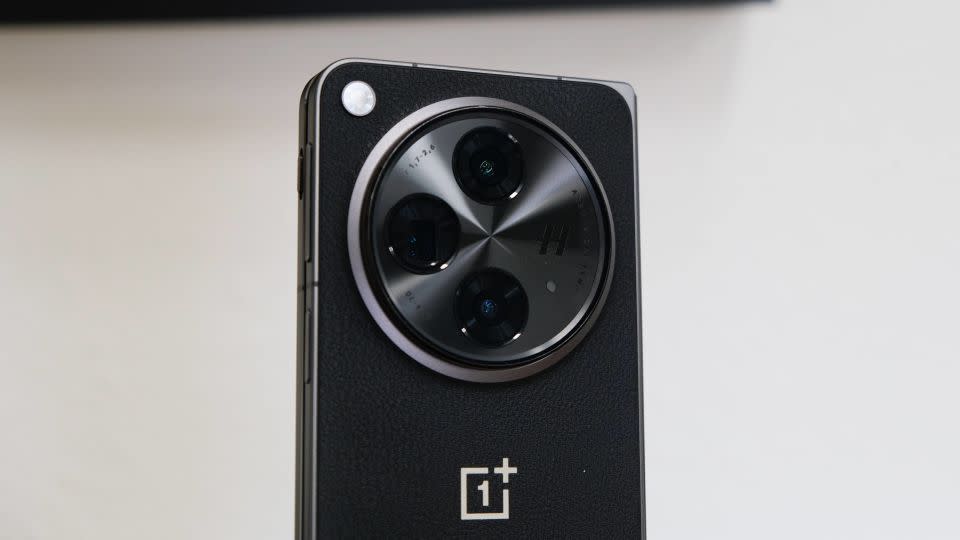
OnePlus defends the decision not to include wireless charging in its flagship phones because they have really fast wired charging. And while I get the overall sentiment, wireless charging is about ease of use and convenience. Personally, I have wireless chargers strategically placed around my home and office for passive charging while my phone is sitting idle.
Even though the Open is the most affordable foldable you can buy, there’s no real excuse for why a $1,700 phone lacks wireless charging in 2023.
How it compares
Bottom line
So, is the OnePlus Open the best foldable phone you can get in 2023? For a lot of people, yes. It has excellent battery life, the best multitasking experience available and a camera that consistently takes good photos. And at what’s effectively a $1,500 starting price point for a phone with 512GB of storage, it’s hard to make a case against it.
However, if the idea of dealing with a smaller company for warranty replacements, something that’s a big part of the foldable display equation, isn’t appealing, then you’re better off with more established options like the Galaxy Z Fold 5 or Google Pixel Fold.
To me, that’s the biggest question mark about the Open. How does OnePlus handle the inevitable cracked displays and other warranty issues that all foldables have experienced after launch? We should hopefully know soon enough.
Note: The prices above reflect the retailers' listed price at the time of publication.
For more CNN news and newsletters create an account at CNN.com

